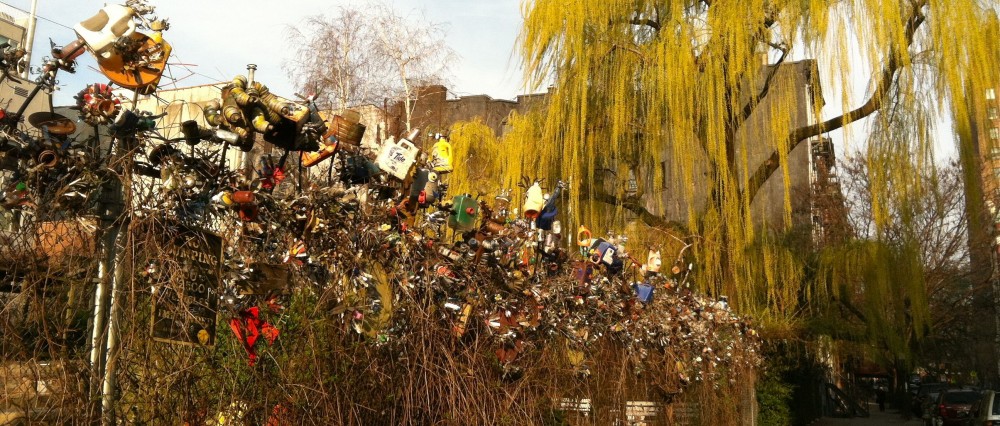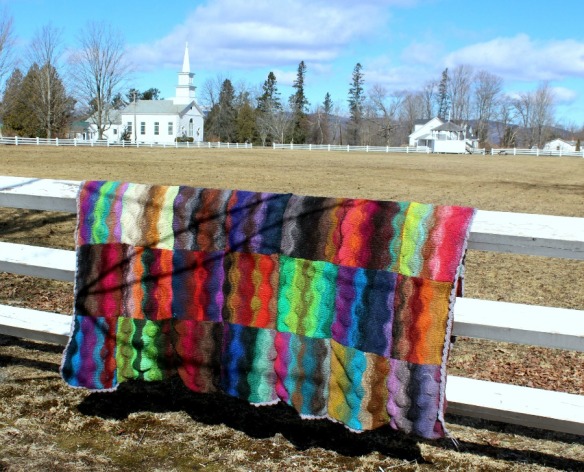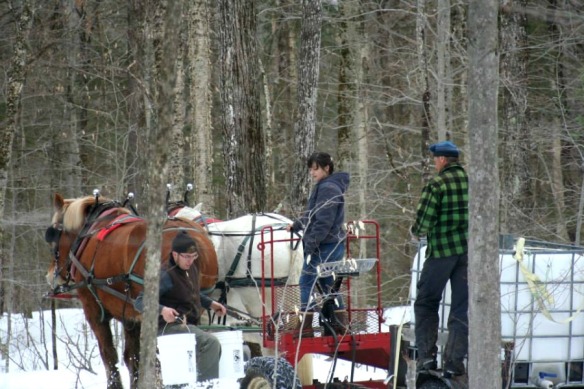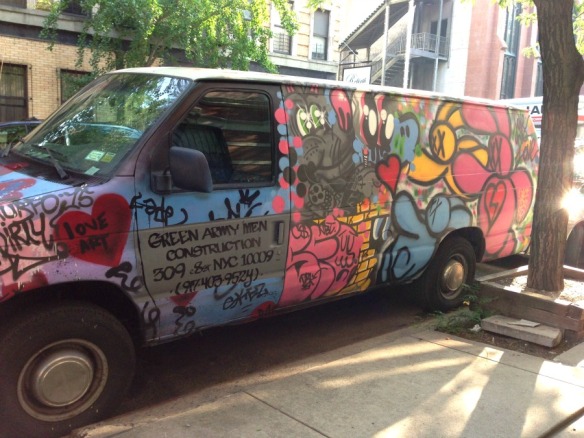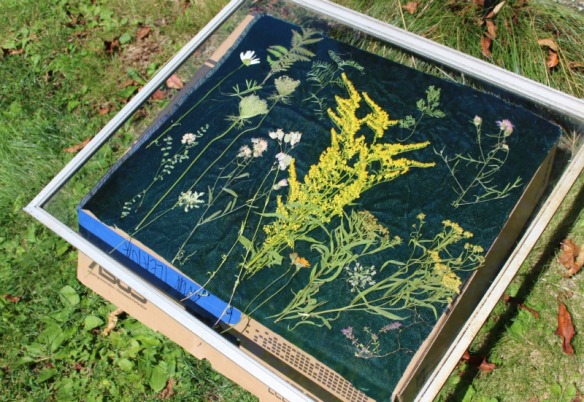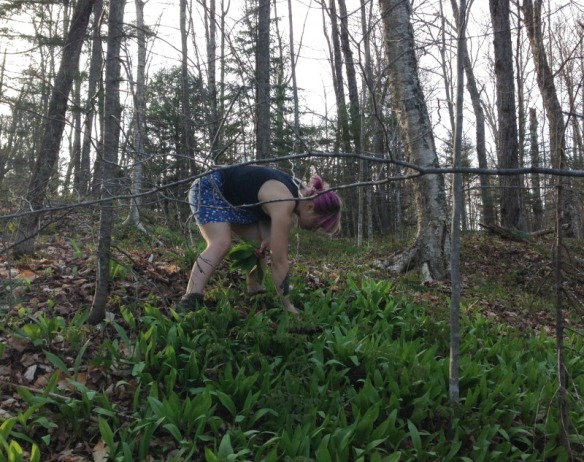By the start of 2019 the farm was in a better place than last year. For one thing, the weather was not as harsh. Last year in the month of March, there were weekly snow storms, each dumping at least 2 feet of snow. Over the winter, there were at least three brutal cold snaps that lasted for days where you never saw the red of the thermometer on the porch go above zero. The big black farm dogs would come back limping in pain from the cold after just a few minutes outside.
Last winter, we made the mistake of getting the large round bales of hay for the goats so they could eat when they wanted, thinking we wouldn’t have the daily chore of feeding hay. Goats waste a lot of hay. The snow covered the dregs of the bales and my neighbor couldn’t get his tractor through the deep snow to move new round bales from the barn to the goat pen. I had to resort to stuffing my sedan with as many small bales of hay as I could from the feed store. By the time spring arrived, the two yearling goats were skinny because the larger goats bullied them away from the hay that I would throw over the fence from my shoveled path of waist deep snow.
When people have hayfields around here, farmers with haying equipment will cut the fields for you and take the hay to sell. It is a win-win – your hayfields are cut down and it supports the community by providing sustenance for both people and animals. If you with the hayfield have animals to feed, the farmer with the equipment is obliged to give you a percentage of the hay. This year for my percentage, I asked for square bales and I filled the barn with stacks and stacks of sweet smelling bales of hay in the heat of a sunny August afternoon. Enough to last the whole winter and it has simplified the feeding of the goats. They are in perfect condition at the end of winter.

The farm is female. There are three goats. Ginger is the herd queen. She is a cross of Alpine and Guernsey goat. She looks like her Guernsey daddy. She has short legs and is wide like a tank. Ginger has a strut that is like a general marching. Short heavy steps with a powerful purpose. Her cream-colored horns are not straight because she got them stuck and twisted in a hay net when she was a yearling. She is haughty and aloof because she nursed from her mother and is not imprinted or obliged to humans. She will tolerate attention from people only if they can offer something she wants, especially peanuts. Luna and Hermione were purchased by me on the first day I moved to the farm from John Hall, the famous Farmer John from the Beekman 1802 farm. The doelings were both less than 2 weeks old and they were bottle fed by me. I have saved Luna’s life on two occasions and I think she knows it and is grateful. Because of this, she is the most affectionate to me and therefore is my favorite. Luna is the largest goat and is the second in line to the herd queen. She is graceful and tosses her horned head back like a diva tossing her hair. Hermione is the lowest man on the totem pole. She and Luna are bonded but the herd queen is a bully and Hermione gets the worst of it.


There are six hens. Two of them are little soldiers – survivors of the original flock of six Rhode Island Reds decimated by a brazen predator attack last summer. The other four are Aracaunas that were given to me at the end of the summer to make up for the loss. It was an ordeal to integrate the 2 groups without bloodshed but I was patient and did the work. They’ve only recently stopped being cliquish and have integrated as one flock. However, the two Rhode Island Reds whose turf it was originally, rule the roost – they are the queens in that bunch. They do separate in the evening with the two Rhode Island Reds roosting up together and the Aracuanas pairing up to sleep. Two of the Aracuanas are big hens that are many shades of rust colored and have feather pouffs coming out of the sides of their cheeks so they look like lions. One is a cream colored speckled hen who has a loud voice and the other is a light rust color with a beautiful fan tail of blue grey feathers. She is the last man on the totem pole in the pecking order. The bitch of the flock.


There are six laying ducks. These I raised from two- day old ducklings and I never saw anything grow as fast as a duck. There are two Blue Indian Runners, elegant grey creature who lay blue eggs. Two Black Cayuga, a New York State breed who lay grey colored eggs and two Welsh Harlequins, cream colored speckled ducks who lay a pinkish cream colored egg. They are a tight knit flock and I have not been able to discern any signs of dominance in the group.
The birds are shut in the barn for the winter. Everybody has an indoor living area separated by chicken wire. They can all see each other. The goats are the only ones with access to the outdoors during winter by way of a door in their stall cut into the side of the barn and they can hang out in their fenced goat pen.
Everyone is healthier this being the second winter, not only do I have more experience but I also learned from last years troubles and created better systems. Example – last year when I brought the ducks out from the barn to their outdoor quarters in spring, their heads were sticky because I had only provided shallow rubber pans with water and they were not able to properly dunk their heads as they are wont to do. Last year, I only had deep plastic buckets which cracked with the water froze overnight. This year I used a deep rubber bucket for their water and the first thing they do in the morning when I fill their bucket is to drink and dunk their heads in and splash about. Then they preen themselves. It is their winter water routine as they don’t have their swimming pool and pasture.
We will probably see only a couple more weeks of winter. Already there are signs of spring. Yesterday, the red-winged blackbirds arrived and this night I heard Canada Goose honking in the clouds.
